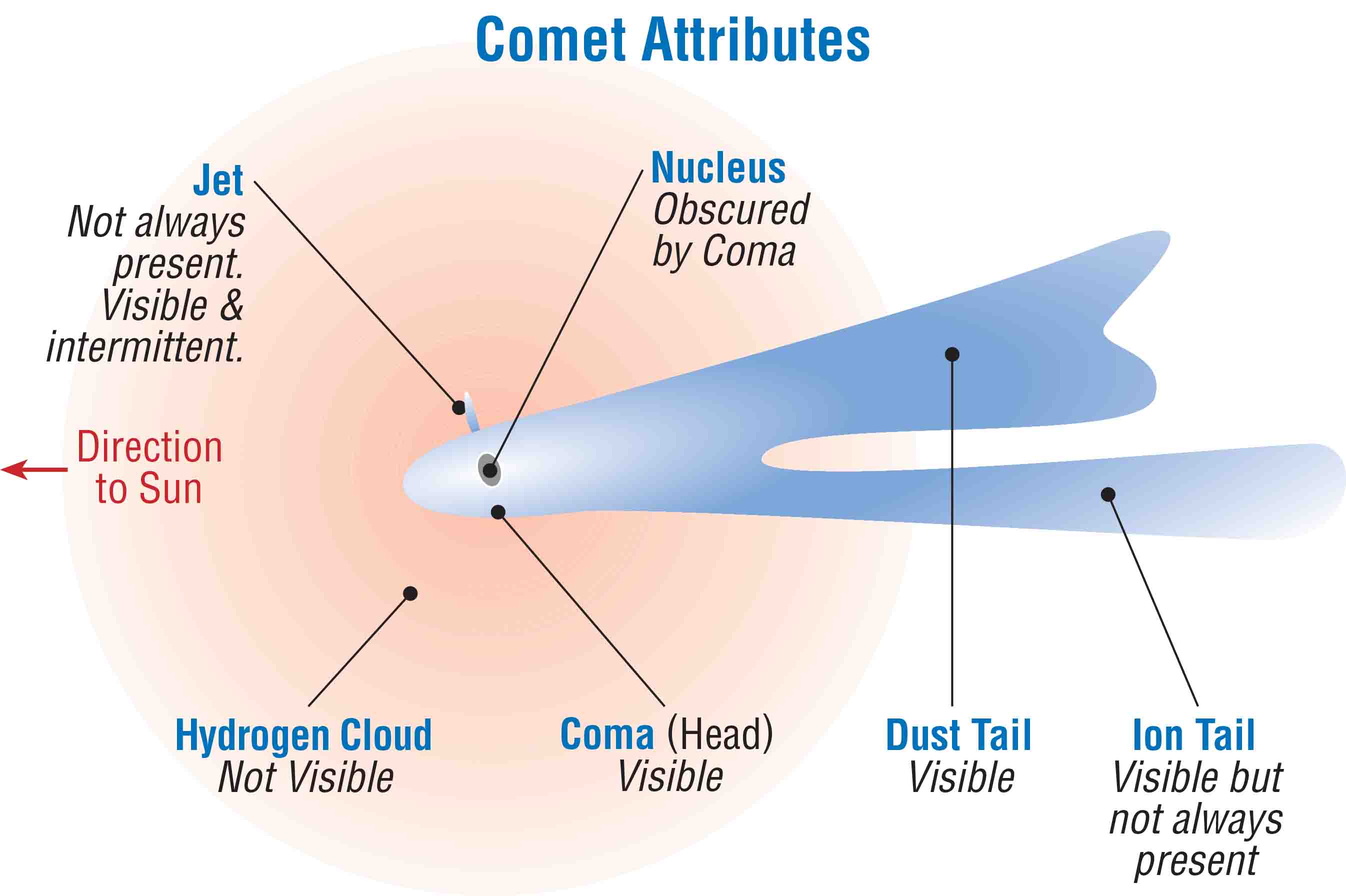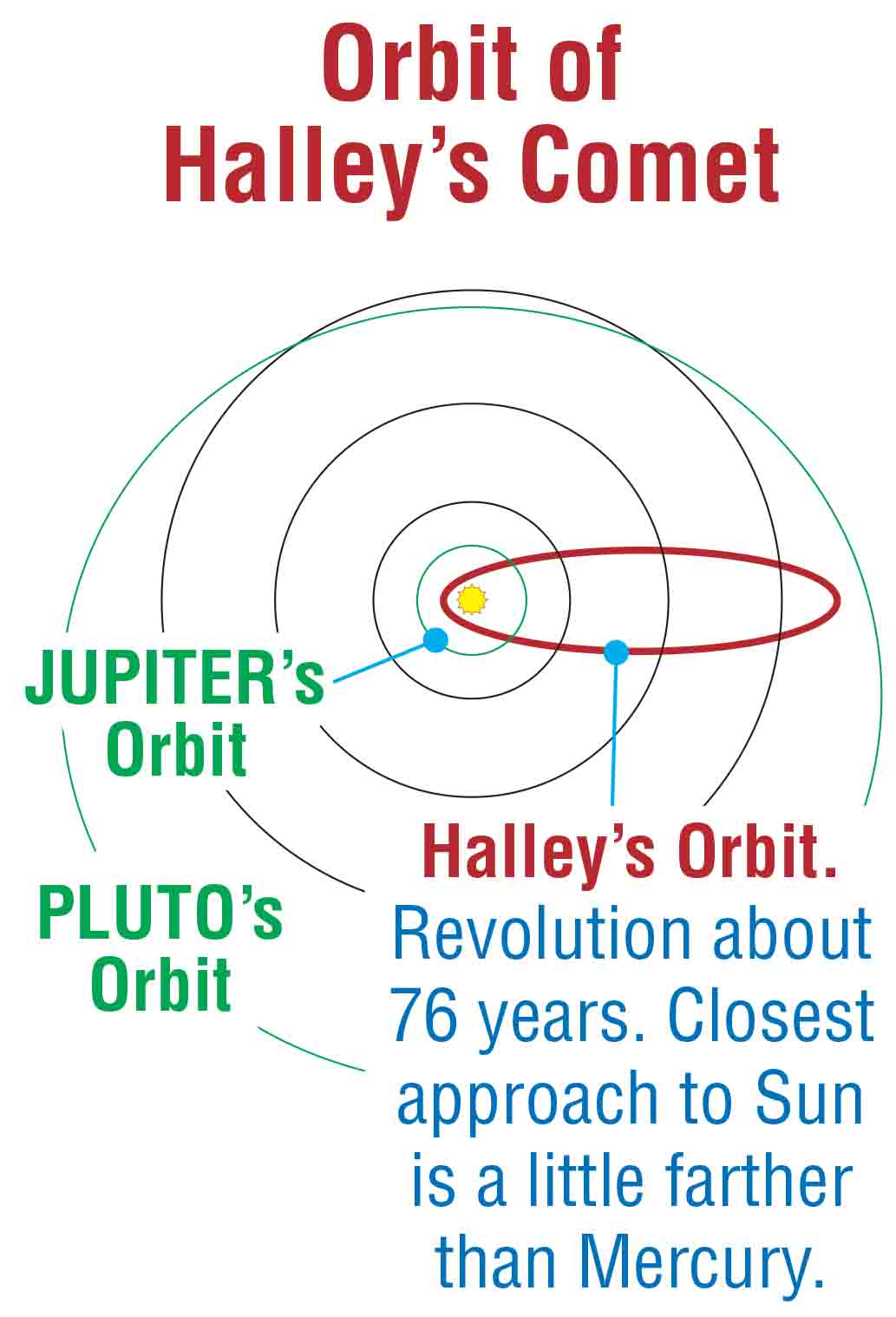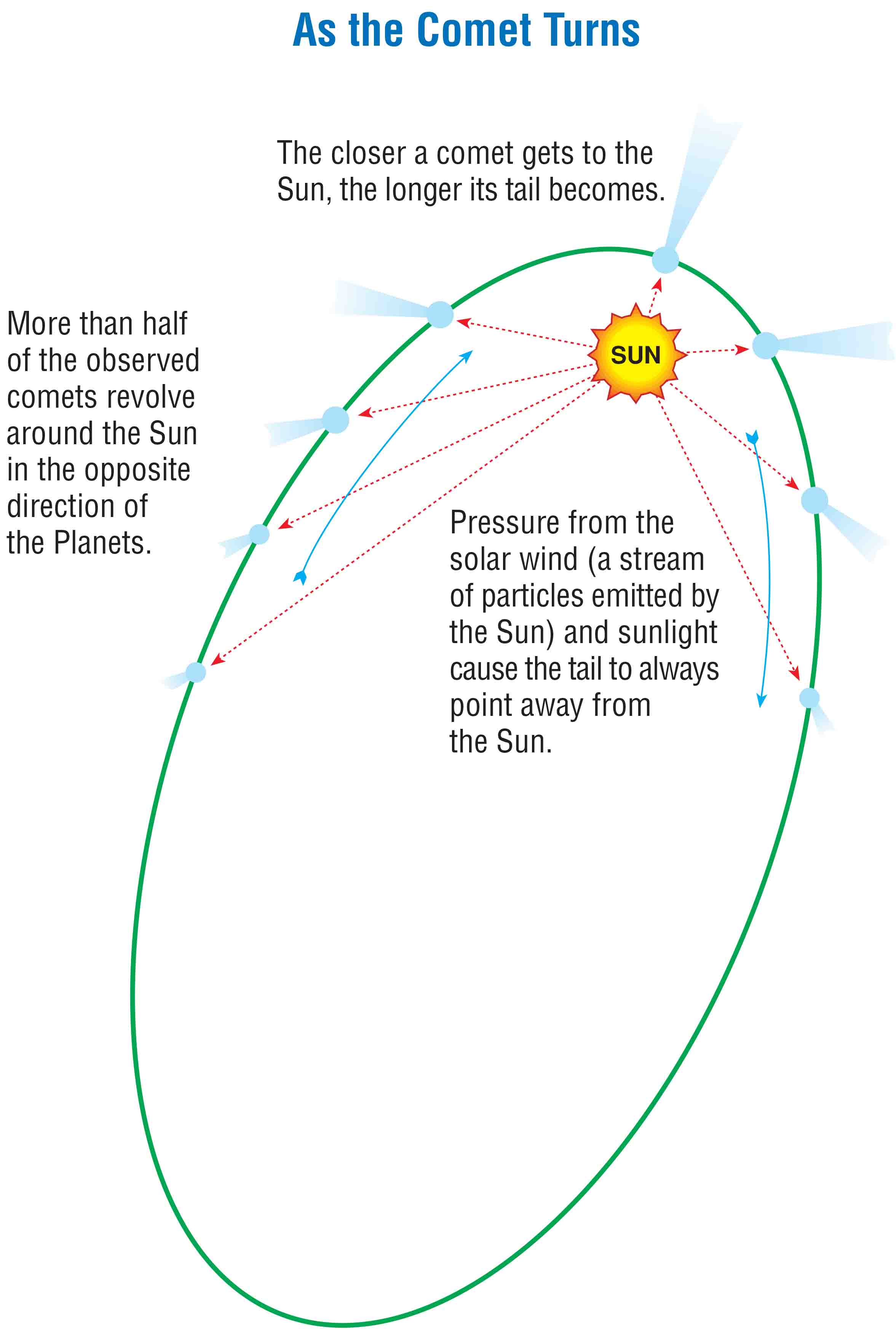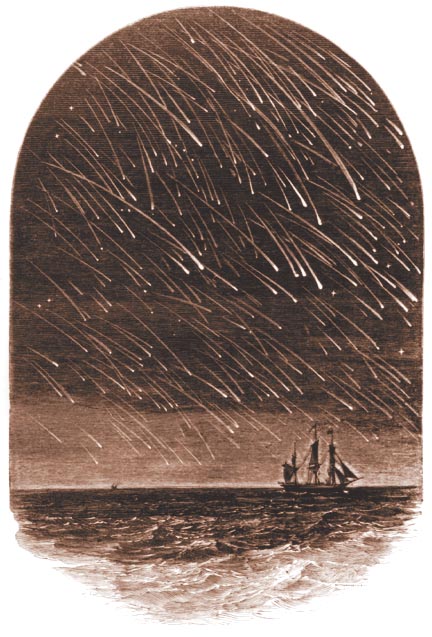Comets
Facts about Comets
• Comets are often described as “dirty snowballs”? Why, because they are basically giant icebergs mixed with other elements including rocks/sand—yes they are composed mostly of water ice.
Origin: Comets originate and mostly reside in the Kuiper Belt and the much farther out Oort Cloud. The Kuiper belt starts immediately after our last planet, Neptune.
Size: Comets can vary in size from a few miles across to possibly 150 or more miles across.
Composition: The composition of comets varies but it can be a mixture of rock, dust, water ice, and frozen carbon dioxide, carbon monoxide, methane, and ammonia.
Orbits: Comets have highly elongated orbits with the far end in the Kuiper Belt or Oort Cloud and the closest end inside Earth’s orbit.
Anatomy: The brightest part of a comet is called the Coma which surrounds the necleus. Tails can stream from the nucleus, created by the various ices subliming to a gas from the energy of the Sun and may number one or more.
Frequency: The appearance of comets is mostly unpredictable however there are periodic comets, like Halley’s that return on a regular basis, however most are one-time events.
Legacy: All of the yearly meteor showers are the result of the Earth passing through leftover dust and rocks from comets that have crossed our orbital path.
Observing: Bright comets can plainly be seen with the eyes. Fainter need binoculars or a telescope. Read the last article at the end of this page for more information.
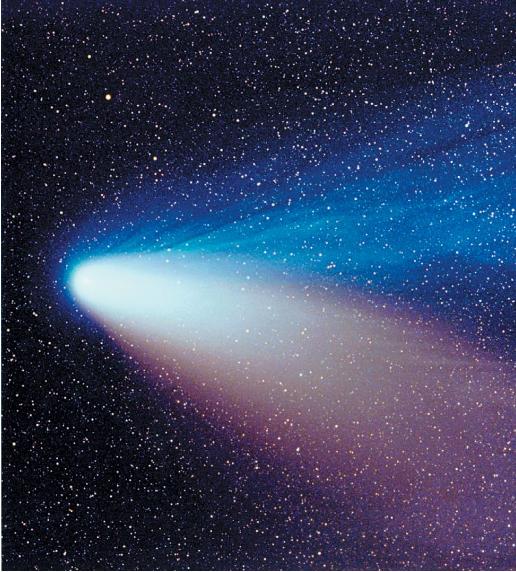
The Great Comet of 1997, Comet Hale-Bopp with its two tails.
The blue tail is the ion tail (elemental gas tail)
and the whitish is the dust tail.

